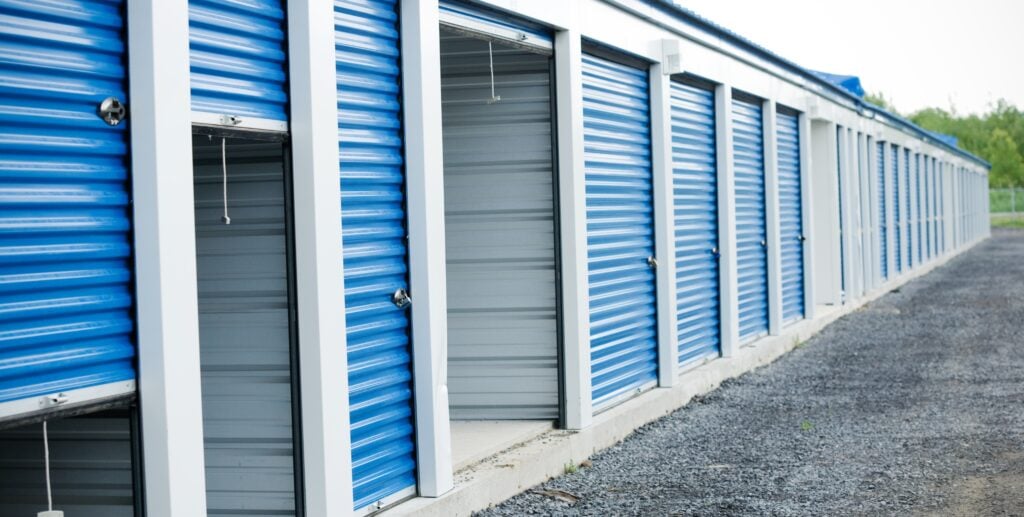If you happen to’re bored with evictions, repairs, and metropolis inspectors, however love the concept of passive revenue, tax breaks, and appreciation, self-storage could be the funding play that’s been hiding in plain sight, whilst you’ve been chasing the subsequent cash-flowing residential rental.
That could possibly be about to alter, as a result of self-storage has been rising sooner than a batch of toadstools after a rainstorm. Over the previous decade, the U.S. self-storage sector has expanded from about 1.4 billion to virtually 2 billion rentable sq. ft, growing by over 500 million sq. ft. In accordance with Yardi Matrix information, the enlargement has been intently linked to the rise in Sunbelt multifamily housing growth in burgeoning cities reminiscent of Houston, Dallas, Austin, and Phoenix.
Granted, self-storage is just not as “attractive” as residential actual property. There’s no inside design, and no HGTV exhibits. Nonetheless, in case you are in search of one thing regular and predictable with out the drama of being a landlord, self-storage could possibly be value contemplating.
It goes in tandem with multifamily actual property as a result of as flats have been stretching far and vast throughout the Sunbelt, condo sizes have been shrinking, ushering within the want for extra self-storage. “Houston flats constructed from 2015 onward have shrunk by 44 sq. ft on common …whereas 5.3 million sq. ft of storage have been added regionally,” a current evaluation from nationwide space for storing market StorageCafe finds.
It’s a sample that repeats throughout the Sunbelt in cities in Florida and Texas, the place, together with North Carolina, RentCafé studies that self-storage stock is increasing on the quickest tempo since 2014, with some markets quadrupling capability.
Amid a housing growth of shrunken flats, People are proving cussed downsizers. “Self-storage has quietly change into the spine of this new actuality,” a StorageCafe analyst informed The Actual Deal.
A Steady Funding
Like a lot of the true property trade, self-storage skilled a post-pandemic surge and has now returned to a extra steady, sustainable development, in response to Yardi. House owners of self-storage items in 2020 and 2021 noticed occupancy charges drop under 3% emptiness, whereas rents shot up 40% in some areas, stated business brokerage CBRE. This development occurred as distant working gained in recognition and workers left their properties for different areas.
In 2023-2024, the market stabilized amid greater rates of interest and slower housing turnover, and this 12 months, indicators of normalization have emerged. In Q1 2025, CRE Every day studies that self-storage transaction quantity climbed 37% 12 months over 12 months to $855 million as a consequence of renewed investor urge for food.
Nevertheless, self-storage continues to be susceptible to market situations, with cap charges presently round 5.5% to six.5% and growth pipelines skinny as a consequence of tighter borrowing situations and elevated growth prices, in response to business brokerage Cushman & Wakefield, which said that “elevated development prices and a scarcity of debt liquidity have pushed down new growth ranges to extra normalized ranges,” indicating that the market is discovering equilibrium once more.
Why Self-Storage Nonetheless Appeals to Traders
Self-storage is just not a brand new idea. It’s been round for many years, and regardless of fluctuations within the residential actual property market, it has proved to be perennially fashionable. Listed below are a number of the causes for its endurance.
Diversified use
Demand is just not restricted to relocation, new infants, divorce, or loss of life. Many individuals with storage items select them to alleviate litter of their properties and garages. Certainly, 1 in 3 People now hire a storage unit, and an additional 18% plan to take action sooner or later, in response to StorageCafé—offsetting the lulls in short-term and mid-term rental housing.
Flexibility
As storage leases are sometimes month-to-month, landlords can alter costs rapidly to accommodate demand, setting it aside from standard business buildings.
Low overhead
There’s little ongoing upkeep in comparison with residential actual property or retail buildouts. Repairs are every day and predictable and don’t require delicate negotiations round tenant occupancy.
Fewer complications
Tenant disputes are uncommon as a result of kind of asset class self-storage falls into and the easy lease agreements.
Room to Develop
The Sunbelt dominates U.S. self-storage markets. Atlanta led the cost, with new deliveries, topping 1.5 million rentable items in H1 2025, in response to Multi-Housing Information, with Phoenix, Los Angeles, Tampa, Houston, and Chicago additionally making the highest 10 in new stock additions.
Investing in Self Storage
Giant REITs reminiscent of CubeSmart, Public Storage, and Additional House Storage are dominant within the self-storage house and provide the bottom barrier to entry. Investing is like shopping for any inventory.
Nevertheless, if you wish to purchase and arrange your individual self-storage house, there are a number of mortgage choices, reminiscent of a standard business mortgage, an SBA mortgage, and a CMBS (business mortgage-backed safety) mortgage, which is become a safety or bond and bought to traders on the secondary market. Rental alternatives are at all times featured on business itemizing websites like loopnet.com or crexi.com underneath “industrial.”
An Ongoing Attraction for Small Traders
Small traders have flocked to self-storage in recent times as a substitute for residential actual property. Evidently, a number of gurus with programs and coaching applications, reminiscent of Mike Wagner’s Storage Riot and AJ Osborne’s SelfStorageIncome.com, are able to accommodate the ever-growing legion of events in search of a substitute for standard landlording.
Remaining Ideas
Self-storage was invented by mom-and-pop traders, who took business areas and added doorways to them. Now it’s dominated by Wall Avenue titans, and alternatives are typically skinny on the bottom. Nevertheless, the continuous demand for space for storing makes it a rising asset class.
As older mom-and-pop traders age out and builders and traders assemble new services, alternatives come up. Nevertheless, as with all funding, selecting a market with excessive demand, acquiring municipal approval, avoiding overleveraging, and rapidly filling items are the keys to success.

